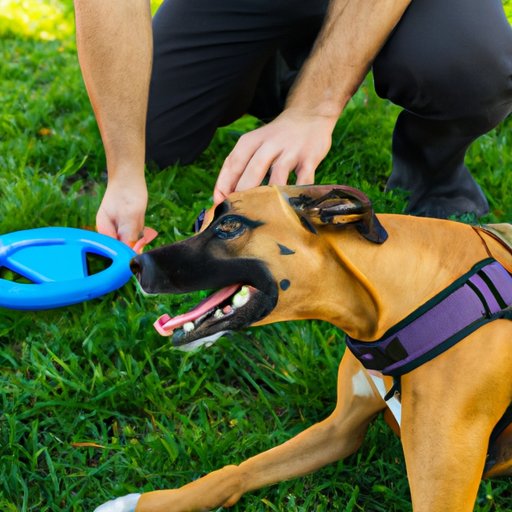I. Introduction
Dog barking is one of the most common issues that pet owners face. While barking is a natural behavior for dogs, excessive barking can be a nuisance to neighbors and worrisome for pet owners. In this article, we will explore effective strategies for training your dog to stop barking.
II. Understanding the Reason Behind Your Dog’s Barking
Before diving into training methods, it’s important to understand the why behind your dog’s barking. Different emotions such as fear, boredom, anxiety, frustration, and attention-seeking can trigger excessive barking. Pay attention to your dog’s body language, such as raised hackles and barking at certain triggers or events. Addressing the root cause of barking is crucial to preventing it from occurring in the future.
III. Rewarding Good Behavior
One effective training method for stopping excessive barking is positive reinforcement. This means rewarding your dog for good behavior. Examples of positive reinforcement include praise, treats, or toys. Rewarding your dog for not barking will motivate them to continue this behavior in the future.
IV. Ignoring Your Dog’s Barking
When your dog is barking for attention, it’s essential to ignore them. Attention-seeking behavior can reinforce your dog’s barking, and if they think barking will get them what they want, it will continue. Turn your back on your dog or leave the room if they are barking excessively. Consistency is key in this training method.
V. Providing Exercise and Stimulation
Many times, boredom and lack of exercise can trigger excessive barking. Ensuring your dog gets adequate exercise and stimulation can reduce anxiety and boredom-related barking. Daily walks, puzzle toys, and interactive playtime will provide your dog with the necessary mental and physical stimulation they need. Regular exercise will also improve their mood and overall health.
VI. Using Corrective Devices
Corrective devices such as citronella or vibrating collars can be an effective method for stopping barking. However, it’s crucial to use these devices with caution and seek professional advice before implementing them. While effective, corrective devices should not be the sole training method and should be used in conjunction with positive reinforcement.
VII. Teaching Your Dog the “Quiet” Command
Training your dog to stop barking on command can be an effective method for stopping excessive barking. You can do this by saying “quiet” firmly after your dog has barked and immediately rewarding them when they stop barking. Consistency and repetition are key to successfully training your dog to follow commands.
VIII. Seeking Professional Help
If your dog’s barking behavior persists or are unsure how to address it, seeking professional help from a trainer is an option. A qualified trainer can observe your dog’s behavior and create a customized training plan to address the behavior. Be sure to research and find a qualified and experienced trainer to ensure your dog receives adequate training and care.
IX. Conclusion
Excessive dog barking can be a frustrating issue for pet owners, but it can be addressed through proper training and patience. Understanding the reason behind your dog’s barking, rewarding good behavior, ignoring barking, providing exercise and stimulation, using corrective devices, and teaching your dog the “quiet” command are all effective strategies to stop excessive barking. Seek professional help if necessary, and remember to be consistent and patient as you work with your dog.
